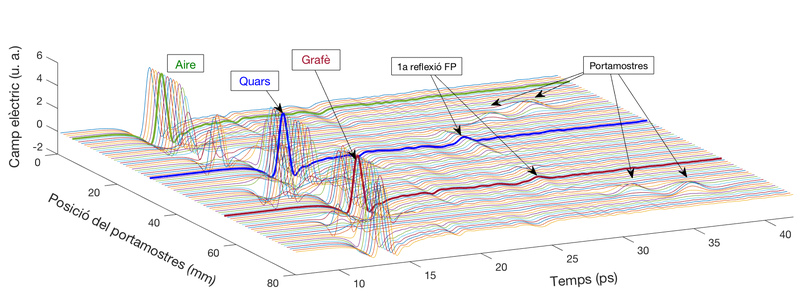David Arcos' thesis takes a step further in the characterization of two-dimensional materials
Jul 19, 2022
On Tuesday 19 July, doctoral student David Arcos Gutiérrez defended his thesis entitled Optoelectronic characterization of two-dimensional materials at high frequencies, which was co-directed by Núria Ferrer Anglada and Lluís Ametller Congost. In the thesis, non-destructive characterization methods are analyzed, applied and compared at frequencies above 1 GHz, which are used to characterize samples of 2D materials on different substrates. The optoelectronic properties of two heterostructures are also measured. (graphene / MoS2 and graphene / WS2 on molten quartz) and are compared with those of individual materials
Two-dimensional materials have a lot of applications in the electronic and photonic device design field, especially when they need to be flexible and transparent. In particular, high frequency applications, above 100 MHz, are promising because of its unique optoelectronic properties. In addition, due to their low dimensionality, to obtain, handle and characterise the properties of these materials is challenging, especially when several layers of different materials are combined in a single heterostructure. The main objective of this research is to apply and to compare some high-frequency optoelectronic characterization techniques on two-dimensional materials. Specifically, graphene, MoS2 and WS2, on different substrates and heterostructures composed by graphene/MoS2 and graphene/WS2 are analysed. Samples of compacted two-dimensional materials, without substrate, such as graphene oxide, reduced graphene oxide and compacted carbon nanotubes (buckypaper) are also analysed. Raman spectroscopy is used in order to ensure the two-dimensionality of the samples and to analyse their structural properties. The surface conductivity of the samples and their transmittance between 200 GHz and 1.5 THz are analysed by terahertz time-domain spectroscopy (THz-TDS) in a transmission setup and also by using a setup based on a Michelson interferometer. A rutile dielectric resonator is used to analyse the surface resistance at the resonance frequency, around 10 GHz, of compacted materials’ samples. Finally, FTIR and optical spectroscopies are used to obtain the transmittance of the heterostructures with respect to the individual layers in near-infrared, visible and near-ultraviolet ranges. The values obtained are in good agreement with the nature and composition of the samples and it is confirmed that the techniques are non-destructive and that they allow the extraction of information about quality, optical transmittance and surface conductivity of the conductive and semi-conductive samples. THz-TDS allows performing a measurement of conductivity without electrical contacts in two-dimensional materials and it is sensitive enough to detect differences in similar materials or in heterostructures made by two different layers of materials.

Share: